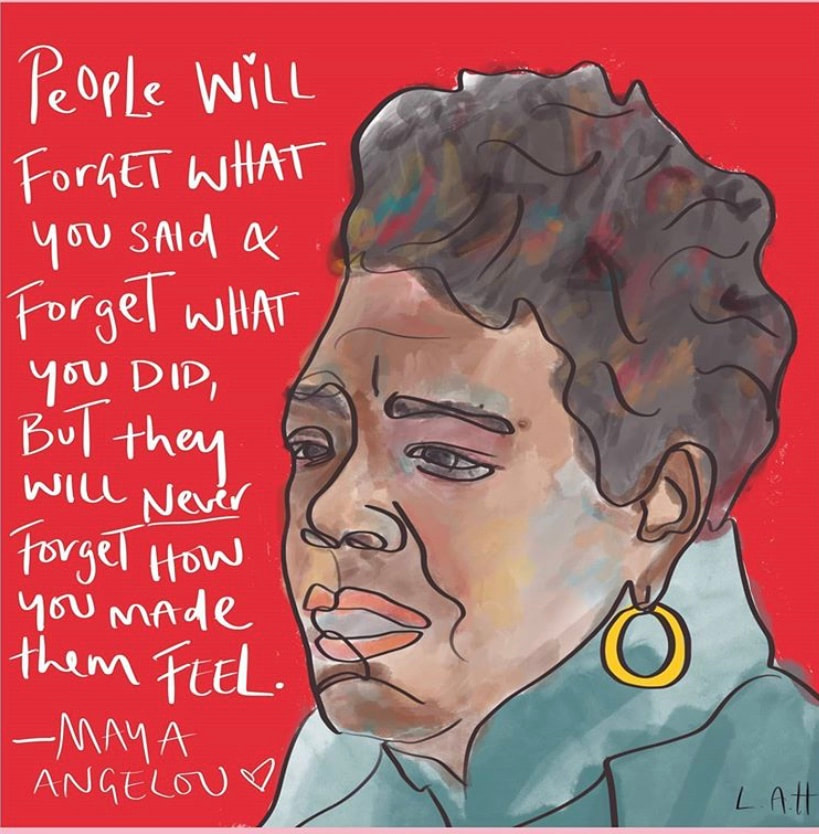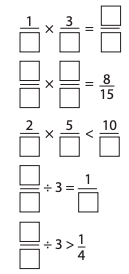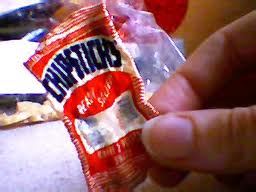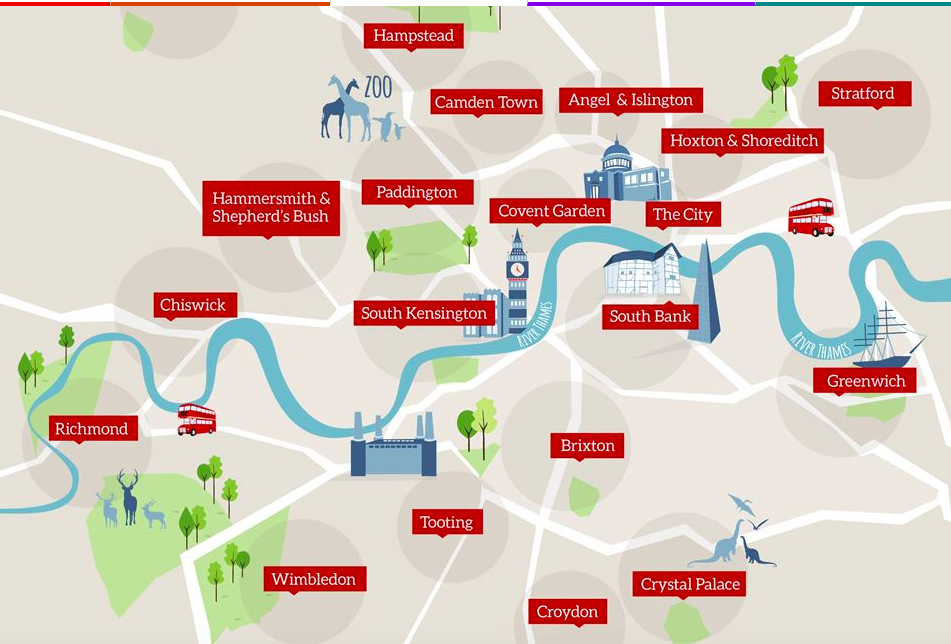Number of the week: 7NCETM activity (Monday)Do the activity below based on your maths group. Yellow, Orange , Green and Red: Roshni and Darren are using sequence-generating rules. Roshni’s rule is: ‘Start at 4, and then add on 5, and another 5, and another 5, and so on.’ Darren’s rule is: ‘Write out the numbers that are multiples of 5, starting with 5, and then subtract 1 from each number.’ Roshni and Darren notice that the first few numbers in the sequences generated by each of their rules are the same. They think that all the numbers in the sequences generated by each of their rules will be the same. Do you agree? Explain your decision. Blue: Roshni and Darren are using sequence-generating rules. Roshni’s rule is: ‘Start at 5, and then add on 9, and another 9, and another 9, and so on.’ Darren’s rule is: ‘Write out the numbers that are multiples of 3, starting with 3, and then subtract 1 from each number.’ What might Roshni and Darren notice about the numbers in the sequences generated by each of these rules? Explain your reasoning. R.E (CAFOD)
Solve this riddle: If two’s company, and three’s a crowd, what are four and five? INVISIBLE INK FUN🍋 EASY PEASY LEMON SQUEEZY! 🍋 What becomes wetter the more it dries? Your (not so secret) challenge for the week...
Write out your life timeline
Start writing your autobiography by conducting research on your own life. Creating a timeline of your life is a good way to make sure you include all the most important dates and events, and it gives you a structure to build upon. You can consider this the "brainstorming" phase, so don't hesitate to write down everything you can remember, even if you don't think the memory will make it into the final version of the book. Your autobiography doesn't have to begin with your birth. You may want to include some family history as well. Write down information about your ancestry, your grandparents' lives, your parents' lives, and so on. Having information about your family history will help readers get a sense of how you became the person you are. Identify the main characters Every good story has interesting characters, friends and foes who help move the plot along. Who are the characters in your life? It's a given that your parents will play a role, along with other close family members. Think beyond your immediate family to others who have affected your life and should play a role in your autobiography.
Pull out the best stories The story of your entire life would start to get pretty long-winded, so you'll have to make some decisions about what anecdotes you're going to include. Begin drafting your manuscript by writing out the main stories that will be woven together to create a picture of your life. There are a few main topics that most autobiographies cover since readers find them fascinating. The childhood story. Whether your childhood was happy or traumatic, you should include a few anecdotes that give a picture of who you were and what you experienced at the time. You can tell the story of your childhood by breaking it down into smaller anecdotes that illustrate your personality - your parents' reaction when they brought you home for the first time, your first steps, your first words, your first pet, day at school etc. Write in your own voice People read autobiographies to gain insight on what it's like to be someone else. Being authentically you is a sure way to keep people engaged. If your writing is formal and stiff, or if it reads like an essay instead of an expose on your life, people will have trouble getting through it. Write as though you're opening your heart to a trusted friend, in prose that's clear, strong and not too cluttered with vocabulary that you rarely use. Write so that your personality is revealed. Are you funny? Intense? Spiritual? Dramatic? Don't hold back; your personality should come through in the way you tell your story. Be revealing You don't have to be explicit, but it's important to reveal truths about yourself and your life in an autobiography. Don't let the book become a list of your accomplishments, with all the negative material carefully kept under the rug. Present yourself as a whole person, sharing talents and flaws alike, and your readers will be able to identify with you and hopefully root for you as they make their way through your story. Good luck and get writing! I look forward to seeing what you come up with...
Number of the week: 5‘Malcolm Little: The Boy Who Grew Up to Become Malcolm X’ by Ilyasah ShabazzNCETM activity (Thursday)Do the activity below based on your maths group. Yellow, Orange , Green and Red: Last month Kira saved 3/5 of her £10 pocket money. She also saved 15% of her £20 birthday money. How much did she save altogether? Blue: Jakob says to Peter, ‘Last month I saved 0. 5 of my pocket money and this month I saved 1/3 of my pocket money, so altogether I’ve saved 40% of my pocket money’. Do you think Peter should agree with Jakob? Explain your decision.
As you have made a start on your autobiography this week, talk to your parents, carers, grandparents or siblings about what they remember, look through old photographs etc- can you add it into your work? The weather is supposed to be brilliant this week so get outside and have a picnic to enjoy those funny or momentous stories of your childhood. If all else fails (rains) you can throw an indoor picnic. Get off those screens and get talking to your loved ones! Solve this riddle: What becomes wetter the more it dries? Instant Ice Science Investigation
In about 20 seconds, the water will get too warm for this trick to work. But you can repeat it with all of the water bottles you have! Riddle: What word is spelled wrong in the dictionary? Some useful links...
Number of the week: 198
|
|||||||||||||||||||||||||||||||||||
|
Some nice ideas to get you through the week...
|
Make your own Play-Dough recipe
I don't care what anyone says, you're never too old for play dough!
You will need:
- 8 tbsp plain flour
- 2 tbsp table salt
- 60ml warm water
- food colouring (optional)
- 1 tbsp vegetable oil
Method
1. Mix the flour and salt in a large bowl. In a separate bowl mix together the water, a few drops of food colouring and the oil.
2. Pour the coloured water into the flour mix and bring together with a spoon.
3. Dust a work surface with a little flour and turn out the dough. Knead together for a few minutes to form a smooth, pliable dough. If you want a more intense colour you can work in a few extra drops of food colouring.
4. Store in a plastic sandwich bag (squeeze out the air) in the fridge to keep it fresh. You can make a batch of colours.
Voila!
Solve this riddle: What word is spelled wrong in the dictionary?
Your secret (and very silly) challenge this week is: to stick some spider/cockroach/insect silhouettes in a lamp shade and wait for the fun to begin!
Of course, if you live with someone who is very nervous about critters, maybe DO NOT play this prank on them. Read the room. Feel the vibe. Don't blame me if it goes wrong!
Riddle: What has four eyes but can’t see? Answer: Mississippi
Some useful links...
- https://en.wikipedia.org/wiki/West_End_theatre#List_of_West_End_theatres
- https://www.bbc.co.uk/bitesize/topics/zcbkcj6/articles/z9ffng8 (BBC Bitesize Music)
- https://www.biblesociety.org.uk/explore-the-bible/read/eng/GNB/John/15/ (Jesus the Real Vine)
- https://www.andythelwell.com/blobz/ (Science-Thursday)
- https://nrich.maths.org/5632 (NRICH activity)
Look at this wonderful work that was sent to me by Mariam. It brings me back to our 'Meet the Ancestors' topic from autumn. Informative yet entertaining. I love it!
How you doin'? 😎
From this week, White Rose Maths do not have the sheets available anymore on their website. However, the videos are longer and there is extra practise. Alternatively, you can visit https://www.bbc.co.uk/bitesize/dailylessons and find a correlating video.
Keep going and remember why we started. We're heading towards the last push now 🌈
Miss Donnelly xxx
From this week, White Rose Maths do not have the sheets available anymore on their website. However, the videos are longer and there is extra practise. Alternatively, you can visit https://www.bbc.co.uk/bitesize/dailylessons and find a correlating video.
Keep going and remember why we started. We're heading towards the last push now 🌈
Miss Donnelly xxx
Number of the week: 182
DISCLAIMER: The band says the word 'ain't' a lot in this song. We all know that is not standard English. SSSH! Don't tell Kerry! She ain't going to be happy! 😏 I'm bad 😜
NCETM activity (Wednesday)
Do the activity below based on your maths group.
Blue:
True or false?
True or false?
- The sum of two fractions is always greater than their product.
- If I divide a fraction by a whole number, the quotient is always smaller than the dividend
P.E
| Whilst at work last week, I had the wonderful opportunity to teach Miss Kennedy and Miss O'Garro a TikTok dance that I learnt during quarantine. We had great fun, burnt some calories and entertained the masses. Why not try something similar? | |
We also made our own assault course using objects that we could find around the place and played 'the floor is lava'.
Fractions in a Box
|
Some nice ideas to get you through the week...
|
Solve this riddle: What has four eyes but can’t see?
Shrink a crisp packet
Have you ever eaten a packet of crisps and wondered what to do with the wrapper?
Try this!
Try this!
How to:
Ask an adult for help using an oven.
- Preheat the oven to 250 degrees Celsius.
- Eat your crisps.
- Clean your crisp packet using water and washing up liquid.
- Dry the crisp packet.
- Cover the bottom of the baking tray with foil.
- Put the crisp packet on the foil and put the baking tray in the oven.
- Leave the crisp packet for two to three minutes.
- Ask an adult to take the baking tray out of the oven - make sure they use an oven glove!
You could make your tiny crisp packet into a keyring! Punch a hole in the corner of the crisp packet and add it to a key chain.
Riddle: What’s black and white and blue?
Solution: A sad zebra. 😔 🦓
Your secret challenge this week is to tell someone all the things you like/love about them. 🥰
Some useful links...
- https://cambridgeschoolshakespeare.com/create-an-insult (Create an Insult)
- http://www.bbc.co.uk/drama/shakespeare/onenightofshakespeare/onenightofshakespeare_insults.shtml (Shakespeare Insult-o-matic)
- https://www.bbc.co.uk/bitesize/topics/zcbkcj6/articles/zgxx2nb (BBC Bitesize Music)
- https://nrich.maths.org/1103/index (NRICH Fractions in a Box)
- https://catholiccuisine.blogspot.com/2013/06/sacred-heart-cookies.html (Sacred Heart cookies recipe)
- https://www.bbc.co.uk/cbbc/curations/shakespeare (CBBC's Shakespeare games and activities)
Number of the Week: 2
Bringing it back with this classic. If you don't know, get 2 know!
Geography/History
Look and compare the old map of Shakespeare’s London (from the 1500s) to the modern map below.
Got an eye for detail? Look out for Westminster Abbey, the Tower of London and the original St Paul’s Cathedral among the houses along the Thames. Regent’s Park appears as an enclosed space near Paddington – it was a private royal hunting park at the time. You can spot the old London Bridge too: covered with buildings, this was the only river crossing until 1750.
You’ll also see some sort-of-familiar names – like Hakeney, Higat, Chelsey and Elinge – alongside some that haven’t changed in 400 years, such as Islington, Fulham, Acton and Paddington.
You’ll also see some sort-of-familiar names – like Hakeney, Higat, Chelsey and Elinge – alongside some that haven’t changed in 400 years, such as Islington, Fulham, Acton and Paddington.
NCETM activity (Wednesday)
Do the activity below based on your maths group.
Yellow, Orange , Green and Red:
Sam added two fractions together and got 7/8 as the answer. Write down two fractions that Sam could have added. Tom wrote down two fractions. He subtracted the smaller fraction from the larger and got 1/5 as the answer. Write down two fractions that Tom could have subtracted. Tom and Sam shared equally one third of a chocolate bar. What fraction of the chocolate bar did each child get?
Blue:
Roland cuts a sandwich into two pieces. First, Roland gives one piece to Ayat and the other piece to Claire. Then Claire gives Ayat half of her piece. Now Ayat has 7/8 of the original sandwich. Did Roland cut the sandwich into two equal pieces? If not, how did he cut the sandwich?
Science/Art
| | |
Using your previous knowledge of how shadows are formed, I would like you to make your own shadow puppet and shadow puppet theatre. Let me know how it goes :)
|
Some nice ideas to get you through the week...
|
Solve this riddle: What’s black and white and blue?
Some of the activities below are not to be done during a worldwide pandemic so please, please, please use your common sense.
Where can you find cities, towns, shops, and streets but no people? Maps
Some useful links...
- https://www.bbc.co.uk/teach/supermovers/ks1--ks2-mfl-spanish-greetings-with-ben-shires/zfksqp3 (Spanish/PE warm up)
- https://www.bbc.co.uk/teach/class-clips-video/physical-education-ks1-ks2-lets-get-active/z72yjhv
(Main PE activities) - https://www.bbc.co.uk/bitesize/topics/zcbkcj6/articles/zp99cj6 (BBC Bitesize Music)
- https://www.youtube.com/watch?v=AbYM-YaeNUM (Jesus Blesses Little Children video)
- https://www.biblegateway.com/passage/?search=Mark%2010:13-16&version=GNT (Scripture from Mark's Gospel)
- https://www.biblegateway.com/passage/?search=Luke+18%3A15-17&version=GNT (Scripture from Luke's Gospel)
Welcome Y6!
Dear Parents,
Don't stress about schoolwork. In June, we will get your children back on track. I am a teacher and that's my superpower. So right now I need you to share your calm, strength and laughter. No children are ahead. No children are behind. Your children are exactly where they need to be (at home in lockdown!)
With love,
Miss Donnelly, Kerry and Mrs Kemp xxx
Don't stress about schoolwork. In June, we will get your children back on track. I am a teacher and that's my superpower. So right now I need you to share your calm, strength and laughter. No children are ahead. No children are behind. Your children are exactly where they need to be (at home in lockdown!)
With love,
Miss Donnelly, Kerry and Mrs Kemp xxx
It will all be alright in the end, if it's not alright, it's not the end x
Key Links
English Maths PE
General
Mass at Our Lady and St. Catherine of Siena
General
Mass at Our Lady and St. Catherine of Siena
Need Help?
For any queries about learning from home during the school closure period please contact: [email protected]
Archives
|
St Agnes Catholic Primary School
Rainhill Way, Bow, London E3 3ER Tel: 02089803076 | email: [email protected] |
|





















